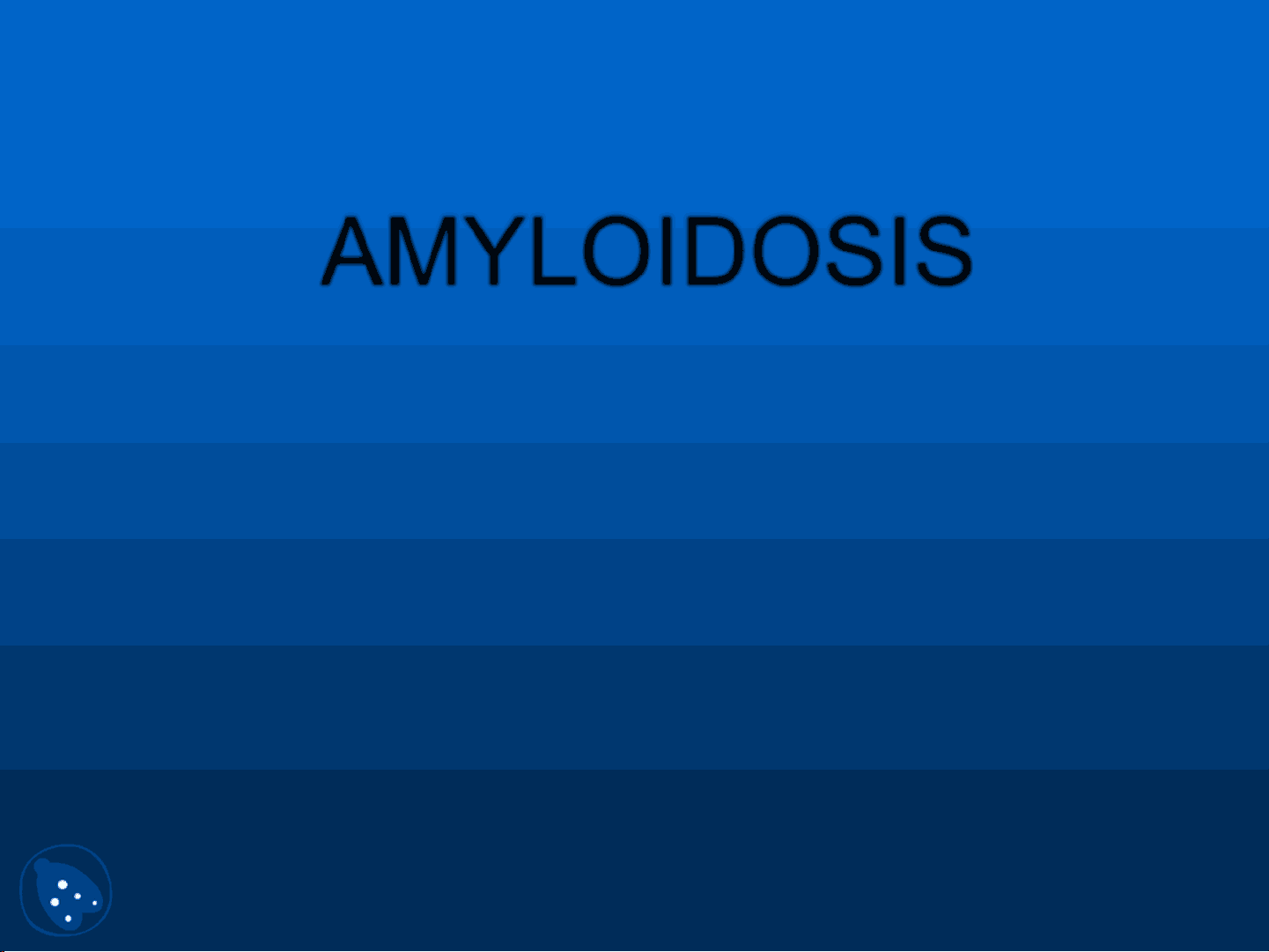
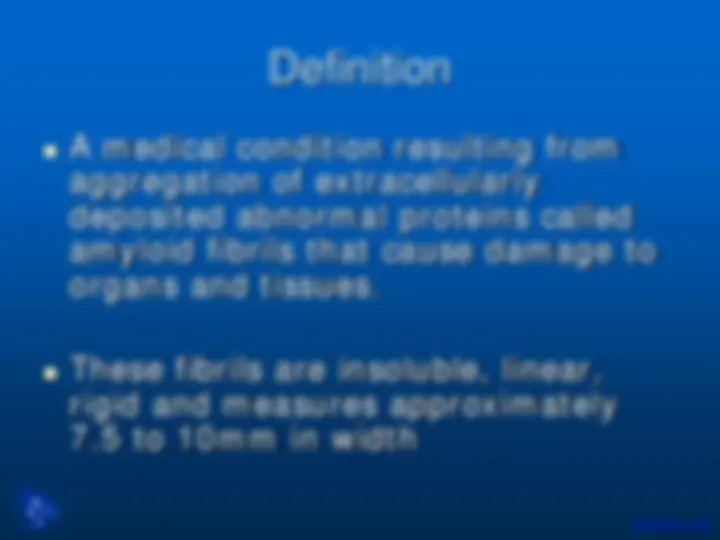
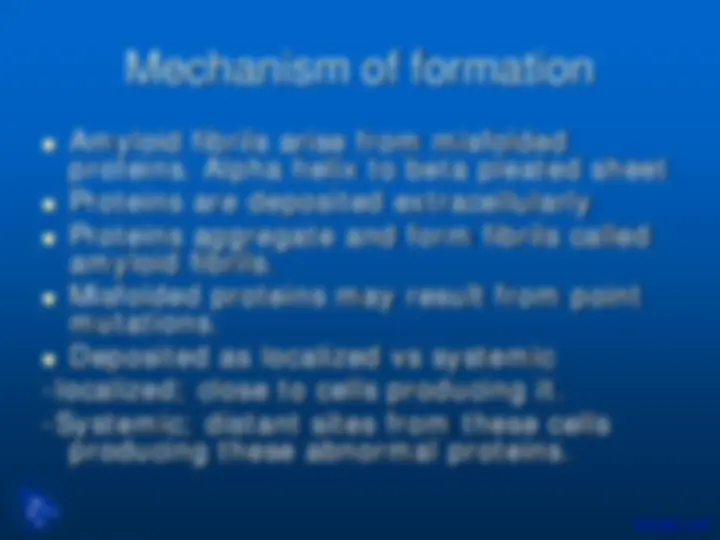


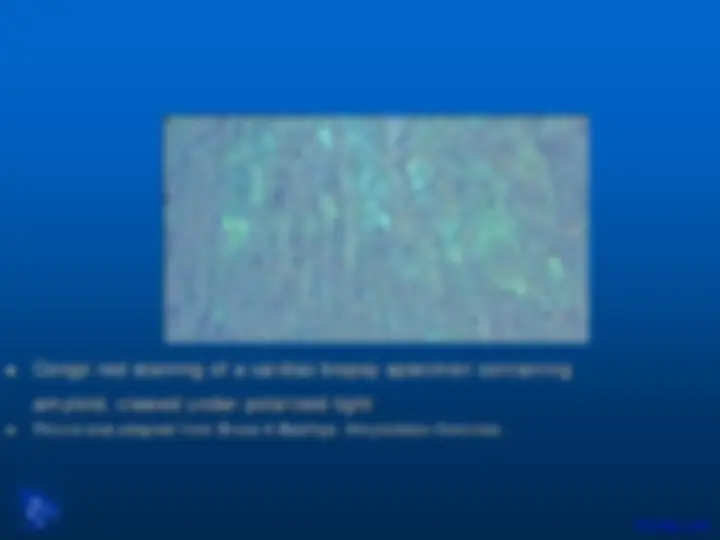
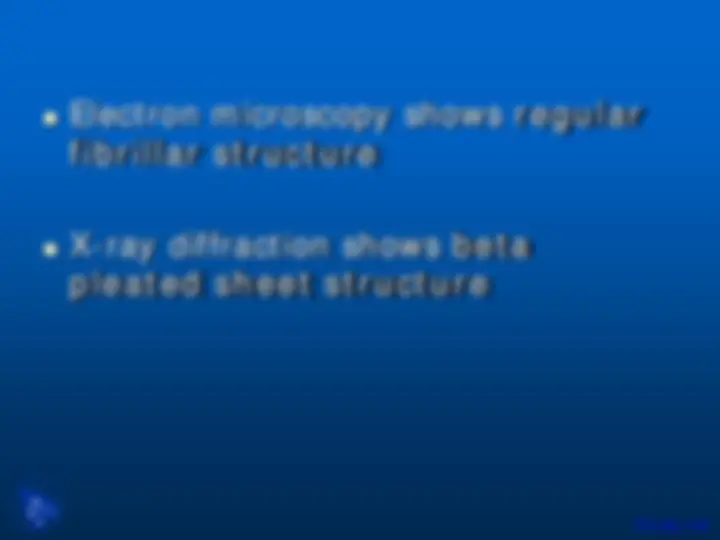
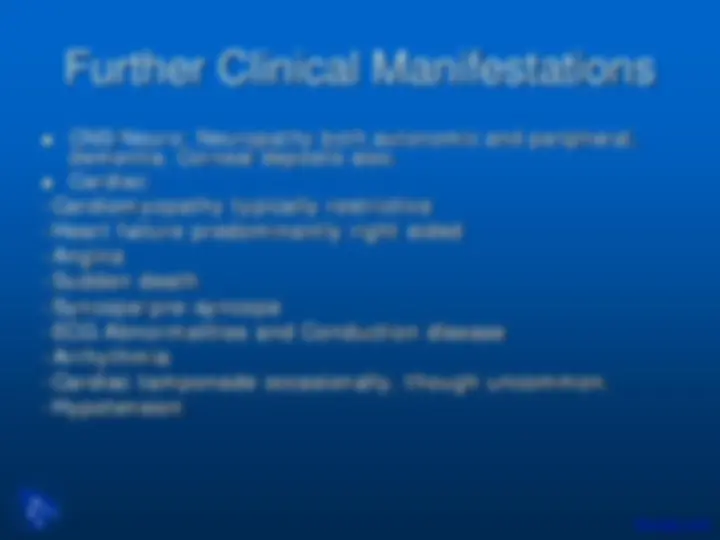
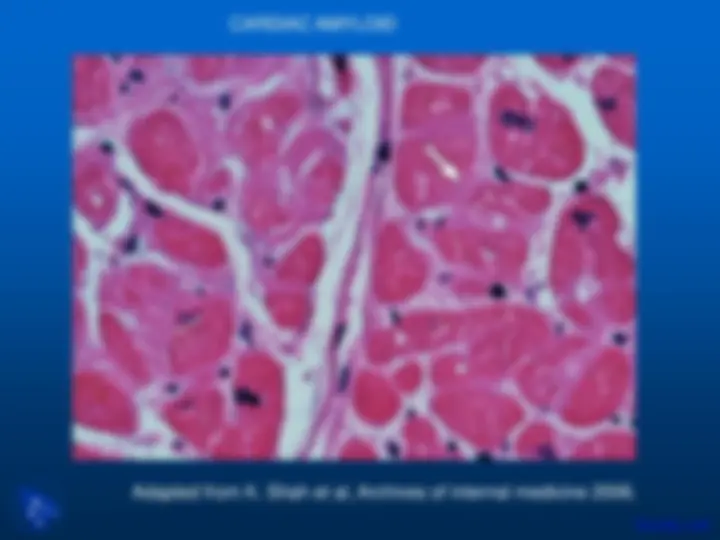
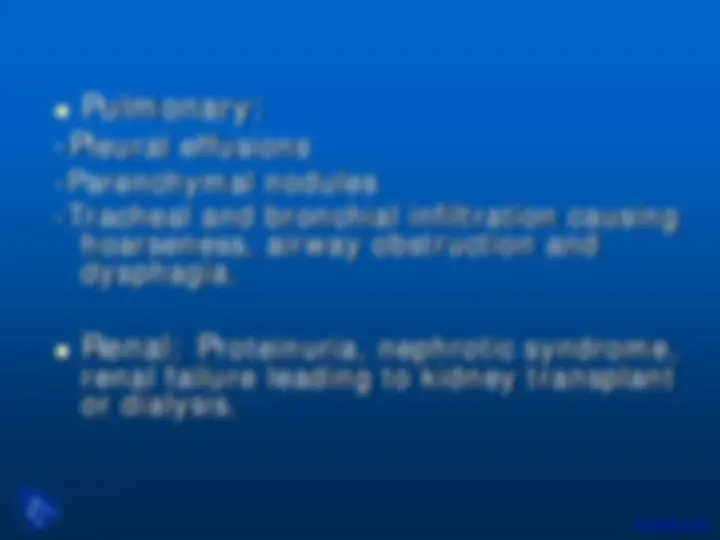
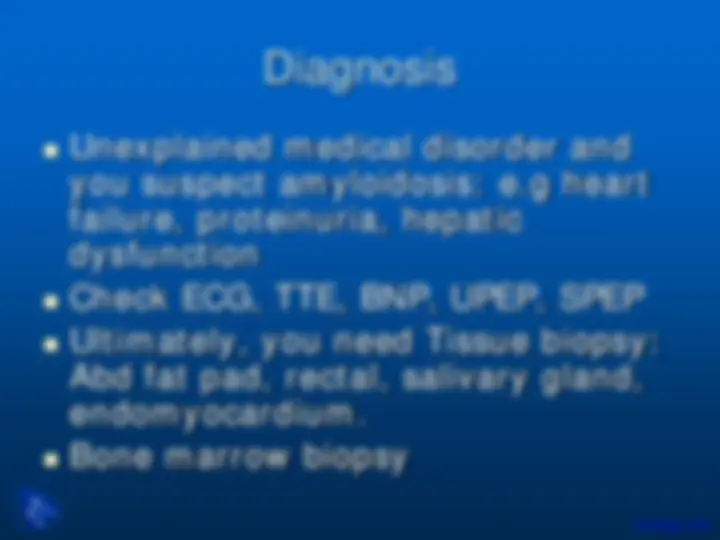
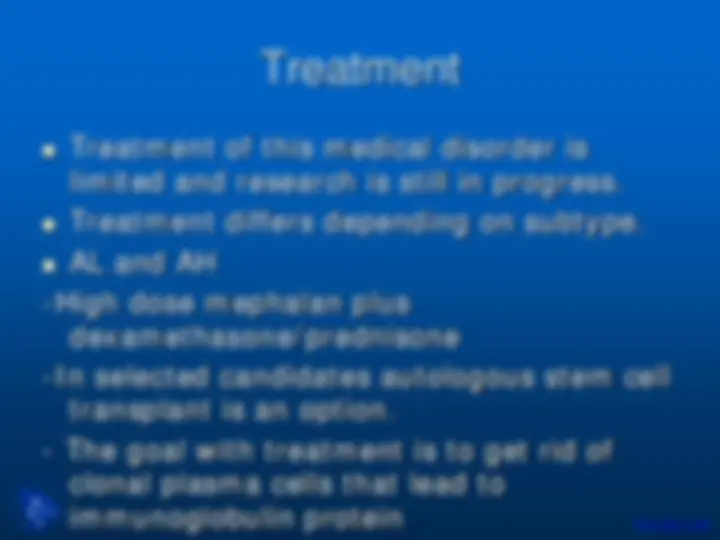
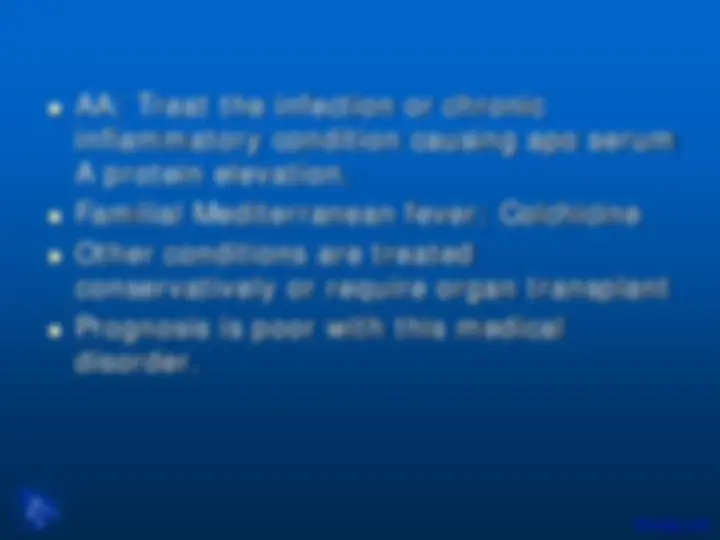
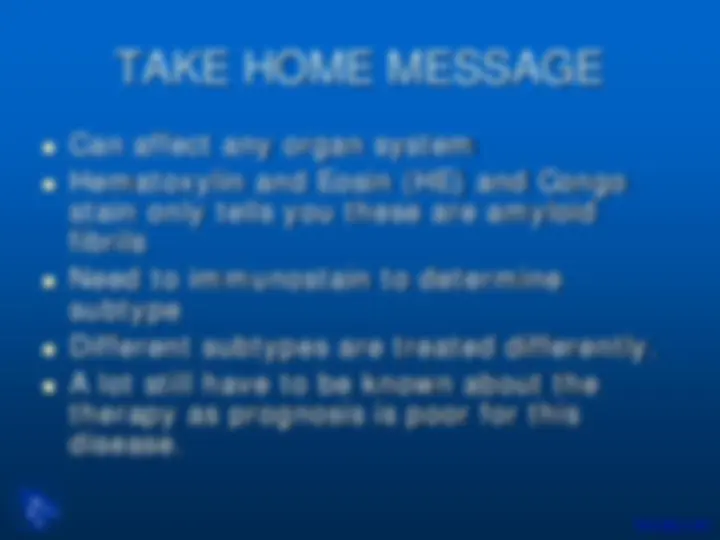


Study with the several resources on Docsity

Earn points by helping other students or get them with a premium plan


Prepare for your exams
Study with the several resources on Docsity

Earn points to download
Earn points by helping other students or get them with a premium plan
Community
Ask the community for help and clear up your study doubts
Discover the best universities in your country according to Docsity users
Free resources
Download our free guides on studying techniques, anxiety management strategies, and thesis advice from Docsity tutors
Introduction to Amyloidosis, Amyloid Subtypes, Abnormal Proteins, Amyloid Fibrils, Misfolded Proteins, Amorphous Eosinophilic Appearance, Hematoxylin and Eosin, Cardiac Biopsy Specimen are some points in Introduction to General Medicine lecture. This lecture is one of 61 lectures you can find here for this course.
Typology: Slides
1 / 21

This page cannot be seen from the preview
Don't miss anything!














Definition
Mechanism of formation
Characteristics common to all amyloid subtypes
Classification
Clinical Importance/Symptoms
Diagnosis and Treatment
Take home message
Amyloid fibrils arise from misfolded proteins. Alpha helix to beta pleated sheet Proteins are deposited extracellularly Proteins aggregate and form fibrils called amyloid fibrils. Misfolded proteins may result from point mutations. Deposited as localized vs systemic -localized; close to cells producing it. -Systemic; distant sites from these cells producing these abnormal proteins.
Amorphous eosinophilic interstitial amyloid observed on renal biopsy Picture was adapted from Bruce A Baethge. Amyloidosis Overview.
Classification: Historical vs Modern
Historical (Clinical): Primary, Secondary, multiple myeloma associated, Familial.
Modern (Biochemical): Since 1960’s based on ability to solubilize fibrils and immunostain for protein subtypes.
23 different human subtypes named based on A for amyloid followed the precursor protein e.g AL, AH.
CNS/Neuro: Neuropathy both autonomic and peripheral, dementia. Corneal deposits also. Cardiac: -Cardiomyopathy typically restrictive -Heart failure predominantly right sided -Angina -Sudden death -Syncope/pre-syncope -ECG Abnormalities and Conduction disease -Arrhythmia -Cardiac tamponade occasionally, though uncommon. -Hypotension
CARDIAC AMYLOID
Adapted from K. Shah et al, Archives of internal medicine 2006.
Treatment of this medical disorder is limited and research is still in progress.
Treatment differs depending on subtype.
AL and AH
-High dose mephalan plus dexamethasone/prednisone
-In selected candidates autologous stem cell transplant is an option.
AA: Treat the infection or chronic inflammatory condition causing apo serum A protein elevation.
Familial Mediterranean fever: Colchicine
Other conditions are treated conservatively or require organ transplant
Prognosis is poor with this medical disorder.